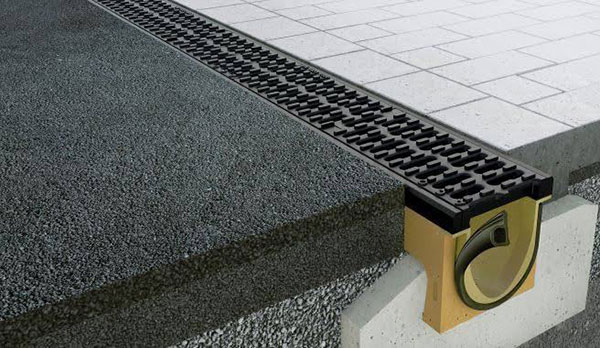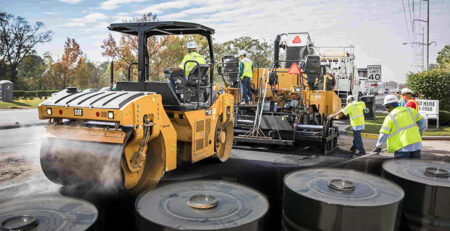Polymer materials in the construction industry
Have you ever wondered what materials are used in different parts of the construction industry? Have you thought about using polymer materials in the construction industry? As a short answer, we can say that nowadays, polymer materials are used in almost all stages of building construction, from under the floor to the top of the roof, and polymers have found their place in the road and construction industries. Polymer materials are used in many cases, such as flooring, wall coverings, insulation, exterior and interior facades, false ceilings, polymer asphalt coatings, polymer concrete coatings, concrete modified with polymers, building adhesives, paints, etc.
Due to their unique advantages, various research is conducted on their application in different sectors, and new achievements of the applications of these materials in this industry are presented every day. In the rest of this article, we will learn about the use of polymer materials in the following cases.
- Application of polymer materials in thermal, moisture, and sound insulation
- Application of polymer materials in pipes
- Application of polymeric materials in concrete
- Application of polymer materials in building stone
- Application of polymer materials in asphalt
Polymer materials in thermal, moisture, and sound insulation
With the increase of science and the extraordinary progress of technology, heat, sound, and moisture insulation produced with polymer materials is progressing daily. Depending on their type and application, these insulators prevent heat, displacement, convection, moisture, sound, and radiation.
Types of building insulation are a covering of different materials applied on the roof, floor, and walls and cause the absorption or control of environmental noise, preventing heat from entering or leaving the desired building space or sealing the building. It equals the entry of water and humidity into the building.
The use of building insulation increases the life of the building and reduces energy consumption in the building. The insulations used in the construction are used in different types of rolls, panels, and color coating for all residential, commercial, etc., buildings.
Types of building insulation are divided into thermal, moisture, and sound insulation in terms of performance and application, each of which has different styles. Nowadays, polymer materials play a significant role in all types of insulation.
Polymer materials in sound insulation
Today’s modern life and conditions expose people to disturbing sounds that can negatively affect people’s peace, health, concentration, and efficiency. Sound insulation is one of the leading solutions offered in this field, which is widely used today. Good insulation refers to actions and adding elements to prevent the entry or transmission of sound into the intended space.
In the past, specific and limited materials were used to insulate the floors, walls, and ceilings of buildings, which had to be done during construction.
But today, sound insulation is used in many different forms in the interior, which, in addition to building materials and other materials, under the title of facing elements on the floor, ceiling, and walls, or they are also used as dual-use and decorative elements.
Polymer materials in thermal insulation
Thermal insulation prevents heat exchange and dramatically reduces heating and cooling costs for indoor spaces. Insulation is vital in preventing heat loss in winter and keeping the indoor space cool in summer. Polymer heat insulators are the new generation of heat insulators, which in addition to saving energy consumption and preserving energy resources for future use, also help clean the environment.
Polymer materials in waterproofing
Polymer waterproofing is another type of insulation that is a cover to prevent the entry and exit of water from moisture caused by snow and rain and underground water in swimming pools, roofs, mosaics, toilets, roof gardens, metal surfaces, and cement. And all levels of the building.
Polymer materials in construction polymer pipes
After discovering their properties and advantages, polymer pipes are used in industry and construction facilities. Due to the materials used in their construction, these pipes have vast physical and chemical properties that have attracted the attention of producers and consumers.
Polymers are an excellent alternative to metal pipes that corrode or rust. These pipes are light and cheap, and easy to install. The advantages of polymer pipes include high resistance to corrosion and impact, lower pressure drop, increased flexibility, etc. The most common use of these pipes, which you may have seen in agricultural and horticultural fields, is in irrigation and water supply systems. Also, polymer pipes are used in sewage discharge systems, water distribution in horticulture, factories, animal husbandry, industrial and chemical wastewater, the food processing industry, etc. Today, these polymer pipes have replaced galvanized pipes in hot and cold water facilities.
Polymer materials in concrete
Concrete is one of the materials used in building construction, such as bridges, dams, subways, airports, residential and office buildings, etc. Polymer concrete consists of fibers, polymer resins, and fine and coarse aggregates. Water is not used in mixing polymer concrete. Instead, the liquid resin, known as a monomer, is made to stick, harden, and gain strength through chemical reactions known as polymerization.
Polymer materials in building stone
Polymer stone is a type of artificial stone that is made using polymer materials and compounds. Adding materials to natural stones and creating a polymerization process has led to changes in the structure of cement and other minerals. As a result of the crystallization of glue, a crystalline network is obtained, with characteristics such as water repellency, surface continuity, high compressive strength, and strength. This type of stone is one of the modern construction materials and is made based on cement concrete.
The polymer structure and additives in these stones cause adhesion between the components and increase the resistance of this type of material.
Polymer materials in asphalt
Asphalt is traditionally produced using stone, sand, natural bitumen, and other additives. In recent years, experts have tried using polymer materials to replace bitumen used in asphalt to achieve various advantages. According to research, polymer asphalt reduces costs by 50% in the long term. In addition, due to less cracking and damage, the need to repair it is much less. The most important properties of polymer asphalts are:
- More adhesion than traditional asphalt
- Usable at high and low temperatures
- Better elasticity
- Increased flexibility in cold temperatures
- Better resistance to deformation and movement
- Less sensitivity to temperature changes
- Increased tensile strength
- More hardness at high temperature
Organic compounds such as thermoplastics, thermosets, thermoplastic elastomers, polyurethanes, polyether polyester copolymers, etc. are used to produce the polymer asphalts.
Conclusion
The construction industry is one of the industries greatly affected by the expansion of polymers today. The advantages of using these materials in buildings and giving a unique beauty to their different parts have also solved many of the problems traditional materials have.
In this article, we tried highlighting the essential parts of the construction industry where polymer materials have opened a foothold. We mentioned the use of polymer materials in thermal, moisture, and sound insulation, the use of polymer materials in pipes, the use of polymer materials in concrete, the use of polymer materials in building stone, and the use of polymer materials in asphalt.
To get more information about polymers and polymers necessary in the construction industry, contact our professional consultants and experts at Iran Petroleum.












Leave a Reply